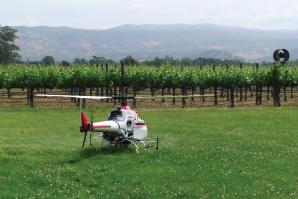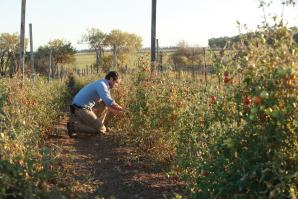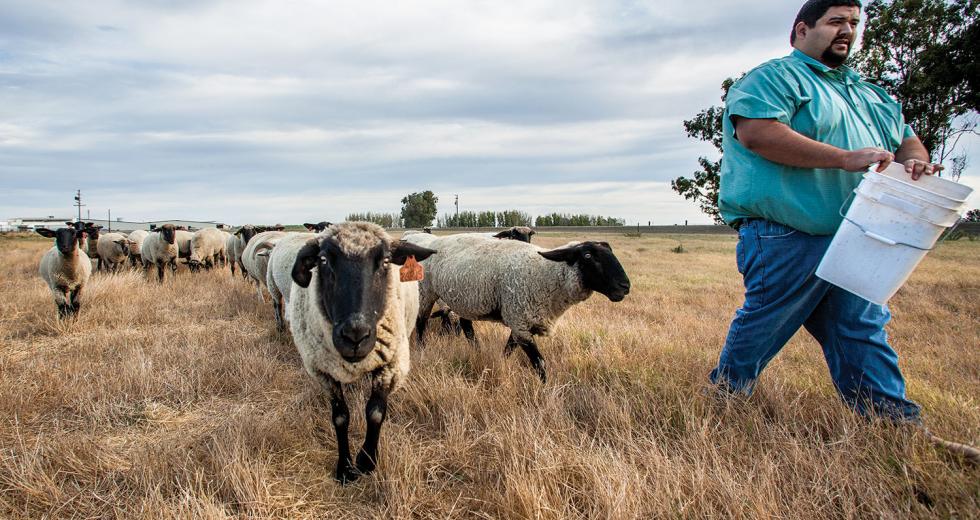Solano County is taking steps to develop a new agricultural hub that farmers and economists hope will someday house facilities to process raw ag products into purchasable commodities.
Currently, in-county processing facilities needed to keep commodities local exist only for sheep, lambs and tomatoes. Everything else — sunflower seeds, cows, corn, wheat — is exported and processed elsewhere. From those locations, it’s delivered to consumers back in the Golden State and worldwide, adding considerable costs and resources to the process.
The sheep industry is one of the key components in Solano County’s efforts to establish other commodity-related industries. In 2011, Solano County agriculture generated $292 million in revenue from a variety of foods spanning walnuts to alfalfa and wine. Solano County’s $9.98 million lamb and sheep industry, however, is its cornerstone. With nearly 60,000 sheep, the county is the second-largest producer in California and is among the nation’s leaders.
Along with prime sheep-raising land, a lamb-processing facility run by Superior Farms in Dixon — one of the few lamb processors west of the Rocky Mountains — plays a significant role in the local industry’s prominence.
The county needs to develop more of these value-added agricultural industries and go “beyond just raising livestock,” says county Supervisor Mike Reagan.
Economic planners in Solano and Yolo counties have set aside land and are seeking investors to finance more processing and distribution facilities. They are calling the future development of this industry hub the “food chain.”
Companies such as Superior Farms are an example of what county leaders want: support services and ancillary industries that fortify one of the region’s most viable sectors.
On 600 acres just north of Dixon near Interstate 80 and a railroad spur, the county is planning an agriculture production cluster, Reagan says.
Though plans aren’t complete, the agricultural industrial park could include refrigeration facilities to support further livestock processing; warehouses to facilitate distribution, packaging and processing; and a research hub affiliated with UC Davis.
Superior Farms, along with a nearby Campbell’s Soup plant, is a huge draw for the cluster, says Michael Yankovich, director of the Solano County Department of Resource Management. By enhancing production techniques and adding necessary facilities, farmers and ranchers can look to market and process their produce locally, saving them money on freight and increasing their ability to market and sell products regionally.
“It’s a huge challenge not to have a beef processor in county,” says Moira Burke, who runs a small grass-fed cattle operation in the Dixon area and is a member of the county’s agricultural advisory committee.
The lack of large-scale beef processing facilities, for example, makes it much more difficult for cattle ranchers to control where their meat goes, she says, and effectively eliminates the option to sell locally, which could enhance revenues by limiting freight costs and allowing vendors to sell at a higher price point to consumers willing to pay a premium for local foods.
Cattle have to be shipped out of the county to be processed, even as far as Nebraska, Burke says.
Solano County is conducting a traffic research study for the Dixon agricultural industrial area now. The plan will go to county supervisors in early 2013 and is the next step in the county’s vision for a stronger, more viable agriculture industry.
Plenty needs to be done to get the food hub built, Yankovich says. Basic infrastructure needs to be installed, and to get the project off the ground, outside investment is required.
But the vision is there, he says.
For more information about Ken James: www.kjamesimages.com
Recommended For You

The Robots are Coming
Technologies of tomorrow are making their way onto the crop fields of today
Scientists, engineers and entrepreneurs are racing to give farmers tools to boost agricultural productivity. These five technologies — some big, some small — could change the face of farming.

Land of the Fee
Can micro loans dig farmers out of their financial holes?
Today’s small farmer climbs an uphill battle to find land, secure capital and overcome the hefty start-up costs. Today, farmers make up less than 1 percent of the population (compared to 15 percent in 1950), they tend to be older (the average age is 57) and about 25 percent are expected to retire in the next 20 years. “This is a new problem for human society,” writes Sharon Astyk, author of “A Nation of Farmers.”



